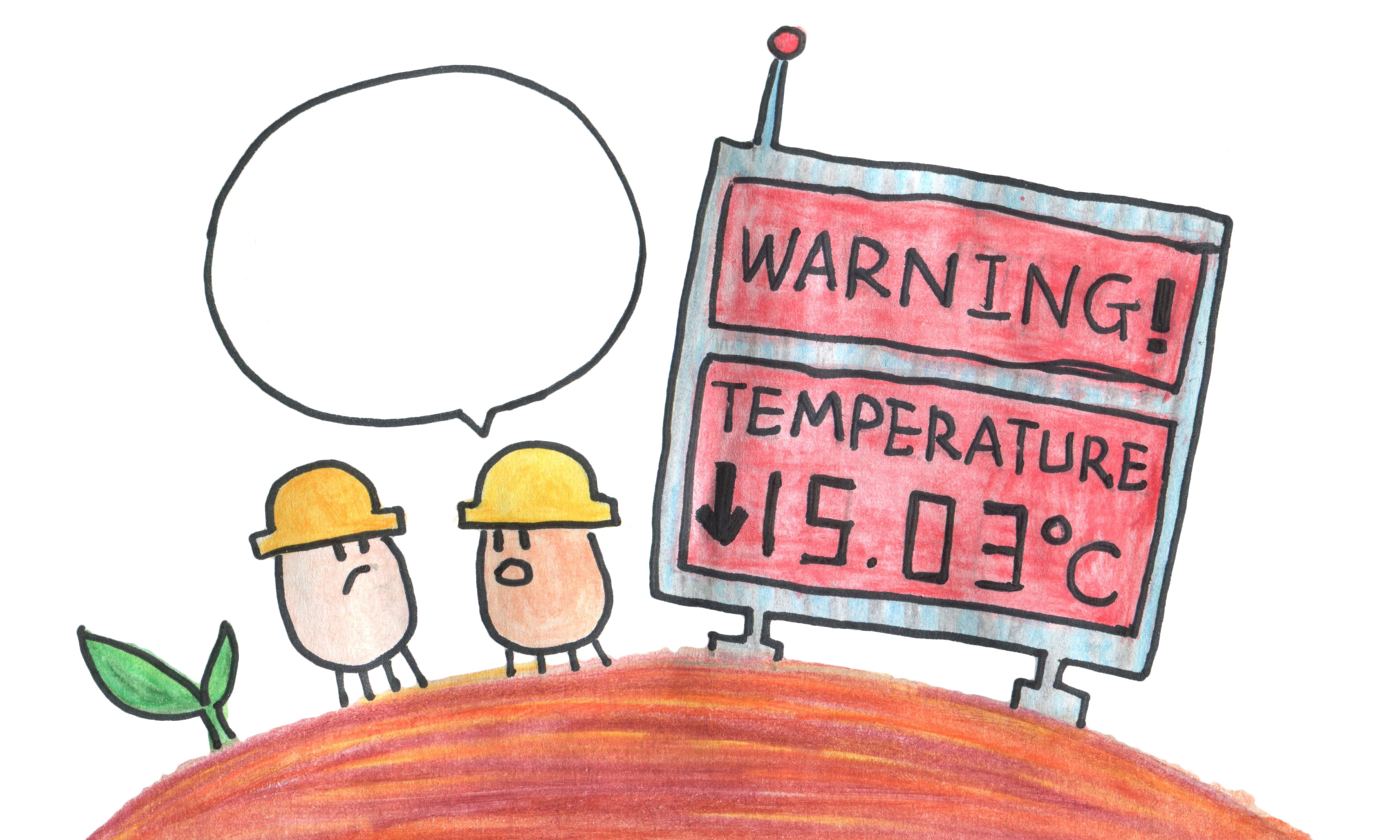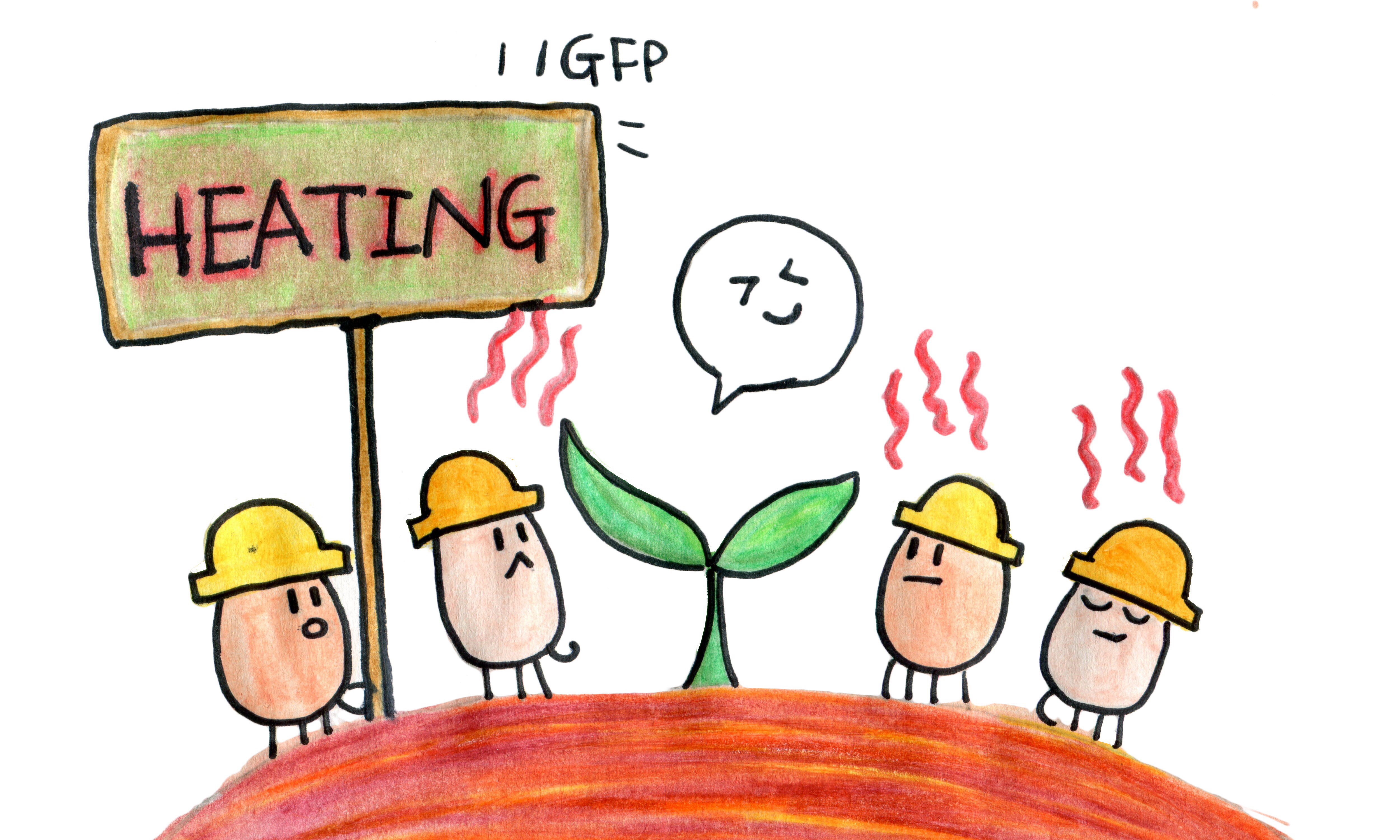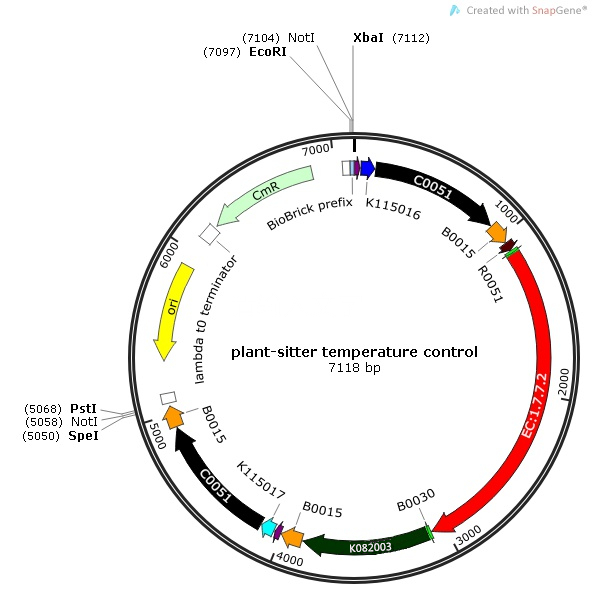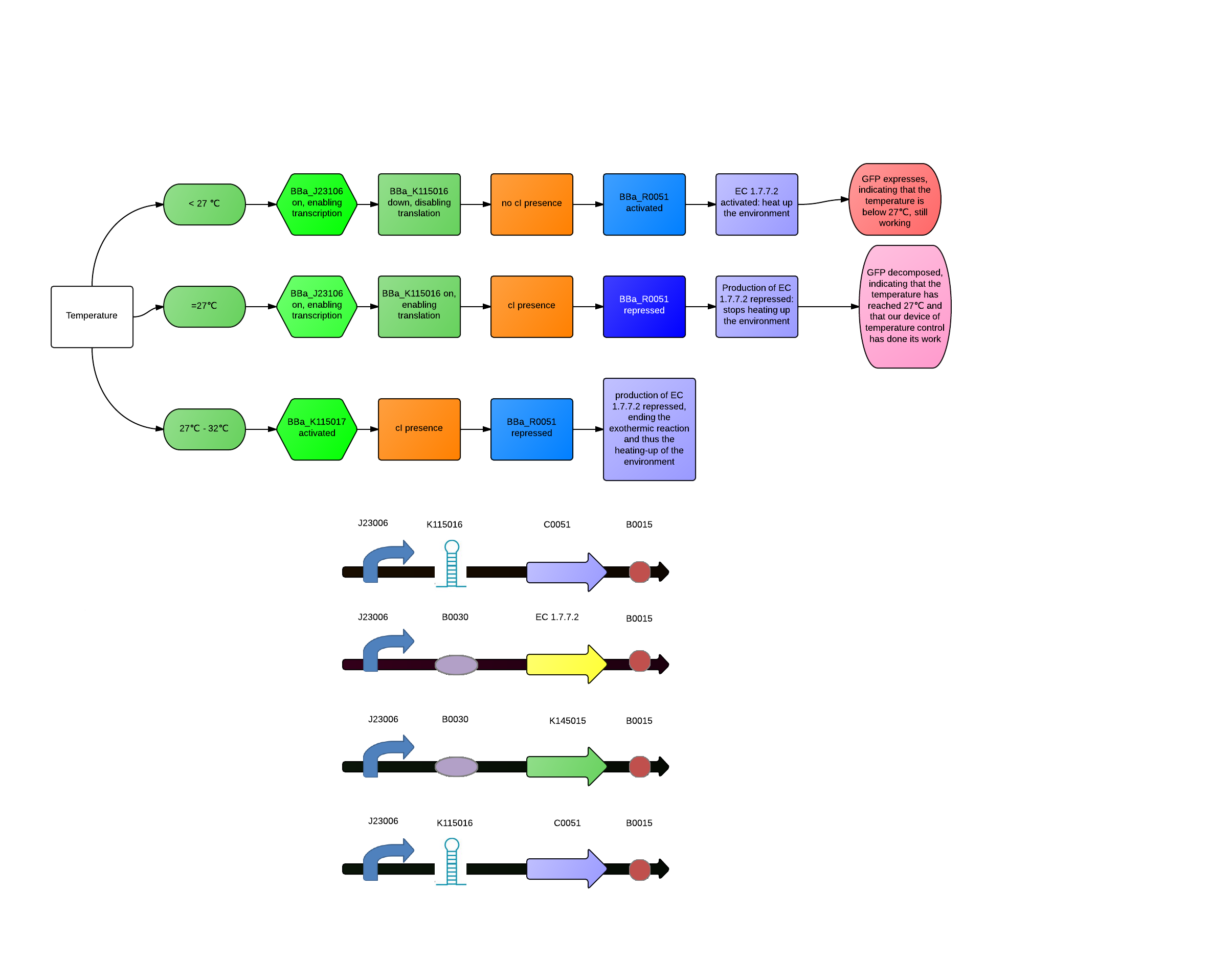Team:Shenzhen SZMS/Project
From 2014hs.igem.org
Peiwen cai (Talk | contribs) (→Plasmid and Working Details) |
Peiwen cai (Talk | contribs) (→Temperature Regulating) |
||
| Line 82: | Line 82: | ||
The following is a flowchart explaining how our E. coli Plant-sitter works. | The following is a flowchart explaining how our E. coli Plant-sitter works. | ||
| - | [[File:IGem_- | + | [[File:IGem_-_New_Page_Correcto.png|center|900px]] |
Revision as of 15:24, 20 June 2014
| Home | Team Members | Project | Modelling | Lab | Safety | Gallery | Human Practice |
Find more of our project below!
Contents |
Background
E. coli Plant-sitter
Our project is to create an “E. coli Plant-sitter” that achieves smart maintenance of healthy plant growth through the application of synthetic biology to temperature moderation. We hope that our toolkit will aid the process of plant cultivation, enlarge the public understanding of synthetic biology, and make the methods and technology of synthetic biology accessible to people’s daily life.
Daily life – yes, on earth our Plant-sitter can be well applied to the growth of plants – but what about…
Wait for it –
MARS!
[http://en.wikipedia.org/wiki/Mars Mars], lying four hundred million kilometers from earth, has the most earth-like seasons due to Mars and Earth’s similar tilts of rotational axes. As a result, in order for men to make use of Martian resources and to develop its potential as an alternative human residence in the universe, a Mars Migration Program was issued SpaceX, indicating that founding a human community on Mars requires 1) releasing carbon dioxide to make the atmosphere denser and to create raw materials for photosynthesis; 2) cultivating plants beside human residence to generate oxygen.
– which is where our E.coli Plant-sitter helps.
Although there will be basic heat supply in the houses, the healthy growth of the plants is still under threat as Mars’ surface temperature varies from -143℃ to 35℃. Therefore, we came up with a system that protects the plants from overly cold environment through smart temperature control, keeping the temperature at around 27℃, aiding the plants who are burdened with the glorious purpose of generating oxygen to defend against the Jotunheim weather on Mars.
Plants whose preferential temperature ranges from 25~30℃ are exposed to the threat of low productivity and unhealthy growth in overly cold environments. Therefore, we came up with a system that aids the healthy growth of these plants by protecting them from overly low temperatures through smart temperature control. Our system of temperature moderation includes two parts, temperature sensing and temperature regulating.
Plasmid and Working Details
The process of temperature sensing involves a promoter, a 27℃ RNA thermometer, and cI. The process of temperature regulating involves a cI regulated promoter, an enzyme which catalyzes an exothermic chemical reaction, a 32℃ RNA thermometer, and a GFP LVA device which serves to indicate the occurrence of a change in temperature. The promoter in temperature sensing part is consistently on and thus so is the process of cI’s transcription from DNA to RNA. When the temperature is below 27℃, the 27℃RNA thermometer takes a curved, locked structure which does not enable translation from RNA to protein cI, which in turn allows the activation of the cI regulated promoter, the production of the enzyme, the occurrence of an exothermic reaction which heats up the environment, and the expression of GFP LVA tag which gives out green light to indicate that the temperature is below 27℃ and that our device of temperature control is doing its work. When the temperature rises and reaches 27 ℃ as a result of the exothermic reaction, the 27℃ RNA thermometer enables the translation of cI protein, which in turn represses the cI regulated promoter, ending the release of heat through the exothermic reaction by stopping the production of the enzyme which catalyzes that reaction. As a result of an inactive promoter (the cI regulated), the GFP also stops its expression and is decomposes, indicating that the temperature has risen from below 27 ℃ to 27 ℃and that our system of temperature control has done its work. If the 27℃ RNA thermometer fails to stop the heating process at around 27℃ and the temperature keeps rising up to 32℃, the 32℃ RNA thermometer is activated, leading to the presence of protein cI, which places a double-check on the inhibition of the heating process.
Temperature Sensing
This process involves BBa_J23106 (promoter), BBa_K115016 (27℃ RNA thermometer), and cI (Repressor protein cI). BBa_J23106 is consistently on and thus so is the process of cI’s transcription from DNA to RNA. When the temperature is below 27℃, the 27℃ sensitive RNA thermometer does not enable translation from RNA to protein cI, which in turn allows the activation of BBa_R0051, the production of the enzyme, the occurrence of an exothermic reaction which heats up the environment, and the expression of GFP LVA tag which gives out green light to indicate that the temperature is below 27℃ and that our device of temperature control is doing its work.
When the temperature rises and reaches 27 ℃ as a result of the exothermic reaction, BBa_K115016 (27℃ RNA thermometer) enables the translation of cI protein, which in turn represses BBa_R0051, ending the release of heat through the exothermic reaction by stopping the production of the enzyme which catalyzes that reaction.
As a result of an inactive promoter (BBa_R0051), the GFP also stops its expression and is decomposes, indicating that the temperature has risen from below 27 ℃ to 27 ℃and that our system of temperature control has done its work.
If BBa_K115016 (27℃ RNA thermometer) fails to stop the heating process at around 27℃ and the temperature keeps rising up to 32℃, BBa_K115017 (32℃ RNA thermometer) is activated, leading to the presence of protein cI, which places a double-check on the inhibition of the heating process.
The process by which our temperature-control system operates may be better illustrated in the following flow chart:
Temperature Regulating
The process of temperature regulating involves BBa_J45503 (cI regulated promoter), an enzyme which catalyzes an exothermic chemical reaction, BBa_K115017 (32℃ RNA thermometer) and a GFP LVA device which serves to indicate the occurrence of a change in temperature.
The following is a flowchart explaining how our E. coli Plant-sitter works.
 "
"





